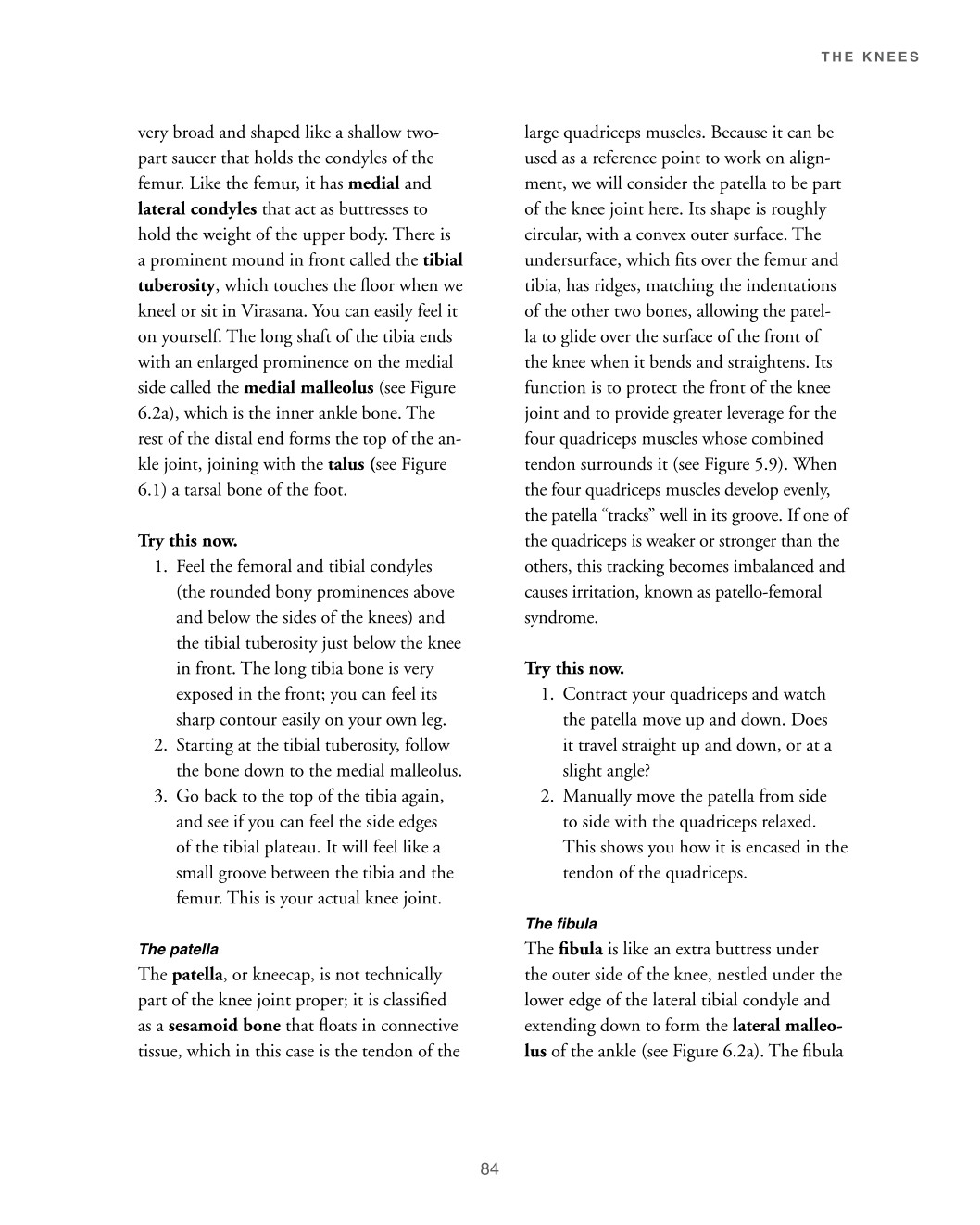

THE KNEES
very broad and shaped like a shallow two- part saucer that holds the condyles of the femur. Like the femur, it has medial and lateral condyles that act as buttresses to hold the weight of the upper body. There is a prominent mound in front called the tibial tuberosity, which touches the floor when we kneel or sit in Virasana. You can easily feel it on yourself. The long shaft of the tibia ends with an enlarged prominence on the medial side called the medial malleolus (see Figure 6.2a), which is the inner ankle bone. The rest of the distal end forms the top of the an- kle joint, joining with the talus (see Figure 6.1) a tarsal bone of the foot. Try this now. 1. Feel the femoral and tibial condyles (the rounded bony prominences above and below the sides of the knees) and the tibial tuberosity just below the knee in front. The long tibia bone is very exposed in the front; you can feel its sharp contour easily on your own leg. 2. Starting at the tibial tuberosity, follow the bone down to the medial malleolus. 3. Go back to the top of the tibia again, and see if you can feel the side edges of the tibial plateau. It will feel like a small groove between the tibia and the femur. This is your actual knee joint. The patella The patella, or kneecap, is not technically part of the knee joint proper; it is classified as a sesamoid bone that floats in connective tissue, which in this case is the tendon of the
large quadriceps muscles. Because it can be used as a reference point to work on align- ment, we will consider the patella to be part of the knee joint here. Its shape is roughly circular, with a convex outer surface. The undersurface, which fits over the femur and tibia, has ridges, matching the indentations of the other two bones, allowing the patel- la to glide over the surface of the front of the knee when it bends and straightens. Its function is to protect the front of the knee joint and to provide greater leverage for the four quadriceps muscles whose combined tendon surrounds it (see Figure 5.9). When the four quadriceps muscles develop evenly, the patella “tracks” well in its groove. If one of the quadriceps is weaker or stronger than the others, this tracking becomes imbalanced and causes irritation, known as patello-femoral syndrome. Try this now. 1. Contract your quadriceps and watch the patella move up and down. Does it travel straight up and down, or at a slight angle? 2. Manually move the patella from side to side with the quadriceps relaxed. This shows you how it is encased in the tendon of the quadriceps. The fibula The fibula is like an extra buttress under the outer side of the knee, nestled under the lower edge of the lateral tibial condyle and extending down to form the lateral malleo- lus of the ankle (see Figure 6.2a). The fibula
84